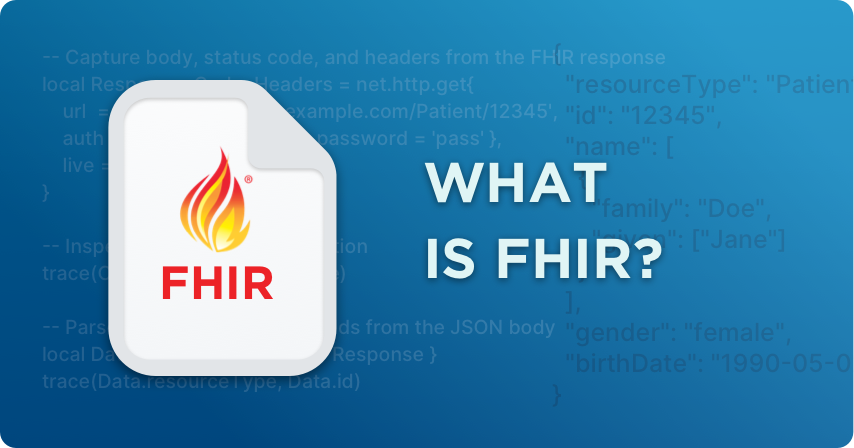
What is FHIR and Why It Matters
FHIR, or Fast Healthcare Interoperability Resources, is a data exchange standard developed by HL7 to make healthcare systems communicate more effectively. It provides a consistent, web-friendly way to represent, share, and retrieve healthcare data between electronic systems such as EHRs, lab systems, mobile apps, and analytics platforms.
At its core, FHIR modernizes healthcare data exchange by using simple, modular structures called resources that are designed for flexibility, scalability, and accessibility. It brings healthcare interoperability in line with modern web technologies.
Why FHIR Was Created
For decades, healthcare organizations relied on HL7 v2 and CDA messages to exchange patient data. These standards worked, but they were often difficult to implement consistently across systems and vendors. As healthcare moved toward patient-centered care, APIs, and cloud-based applications, the industry needed a more adaptable, developer-friendly standard.
FHIR was designed to meet this need by solving several key challenges:
- Complexity: Earlier standards required deep expertise and often led to inconsistent implementations.
- Lack of flexibility: Custom use cases were hard to support without breaking interoperability.
- Modern demands: Web and mobile applications needed easier access to data through familiar protocols.
FHIR builds on proven web standards, enabling both traditional EHRs and modern healthcare apps to communicate using the same language.
How FHIR Improves Interoperability
FHIR changes interoperability from document-centric to data-centric. Instead of sending large messages or entire files, FHIR organizes information into reusable components called resources. These resources represent real-world healthcare entities such as patients, encounters, or lab results.
Key advantages of FHIR include:
- Web-based design: Built on standard web technologies like REST, JSON, and XML.
- Consistency: A shared data model ensures that systems interpret information the same way.
- Extensibility: Supports Profiles and Extensions for local customization.
- Accessibility: Developers can easily test, read, and validate FHIR data.
- Future-ready architecture: Works naturally with cloud systems, mobile apps, and third-party integrations.
By using smaller, standardized data objects, FHIR allows information to move seamlessly between healthcare systems, even those built on different technologies.
FHIR Resources: The Foundation of the Standard
FHIR data revolves around resources — modular building blocks that define healthcare data elements and relationships. Each resource includes standardized fields and can link to other resources to represent complex clinical contexts.
Examples include:
- Patient: demographic and identifying details
- Observation: lab results, vitals, or findings
- Encounter: visits, admissions, or consultations
- Practitioner: provider information
These resources form a connected network of information that represents the entire healthcare ecosystem. For example, a single Patient resource may be linked to multiple Encounter and Observation resources.
Learn more: FHIR Resources Overview
Why FHIR Matters to Healthcare
FHIR is more than a technical standard. It is a framework that enables innovation and patient empowerment. By promoting data accessibility and interoperability, FHIR supports:
- Patient access: Allowing patients to view their health data through apps and portals.
- Innovation: Enabling developers to create apps that connect directly to EHR systems.
- Compliance: Supporting interoperability requirements under the 21st Century Cures Act.
- Efficiency: Reducing the cost and complexity of data integration projects.
These advantages have made FHIR the preferred standard for modern interoperability initiatives around the world.
Iguana's Role in the FHIR Landscape
While FHIR simplifies how systems communicate, real-world integration still requires managing complexity, especially when older HL7 interfaces and modern FHIR APIs must coexist.
Iguana bridges that gap. It allows healthcare organizations to:
- Exchange data between FHIR and legacy systems
- Transform HL7 v2 messages into FHIR-compliant JSON
- Validate and route FHIR data within secure workflows
Next: How FHIR Works
Now that you understand what FHIR is and why it matters, the next step is to see how it operates in practice. Learn how FHIR uses RESTful APIs, CRUD operations, and standardized formats to make healthcare data exchange simpler and faster.
Continue reading: How FHIR Works →